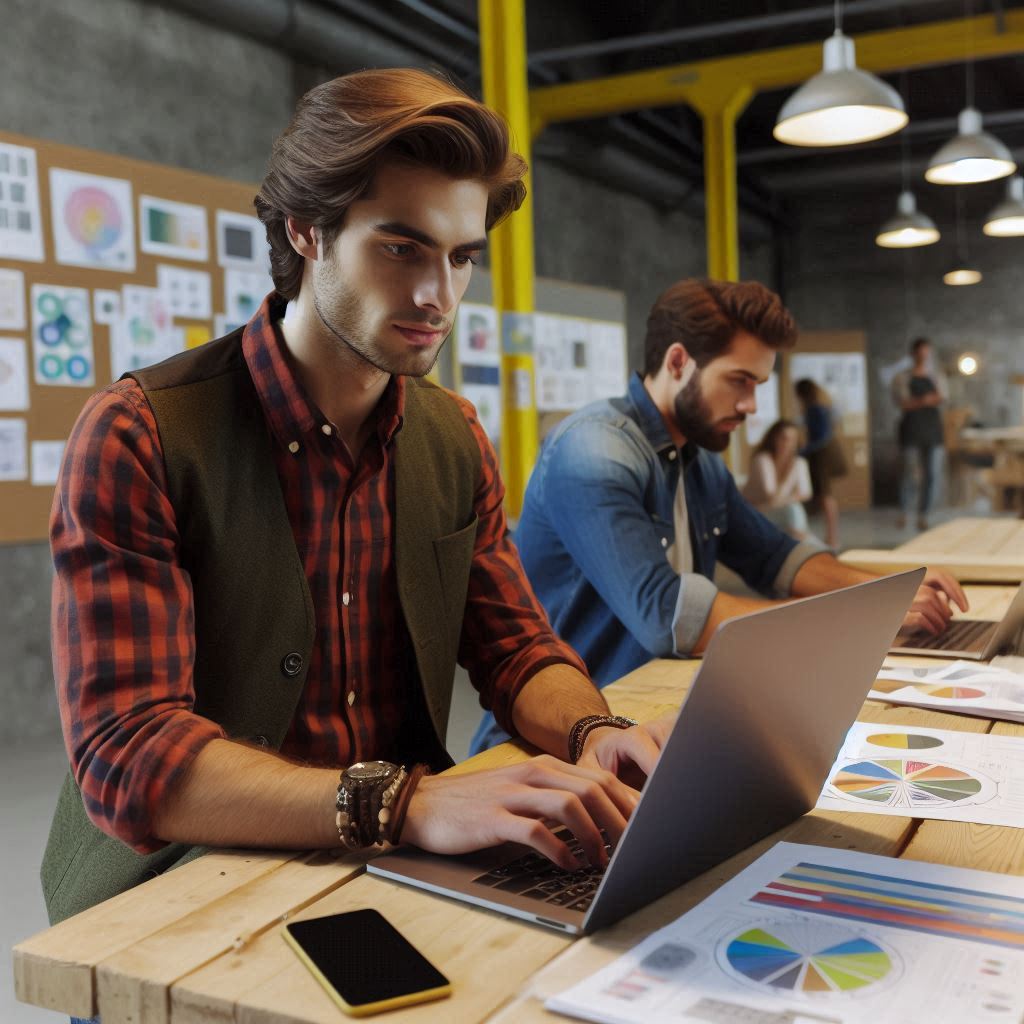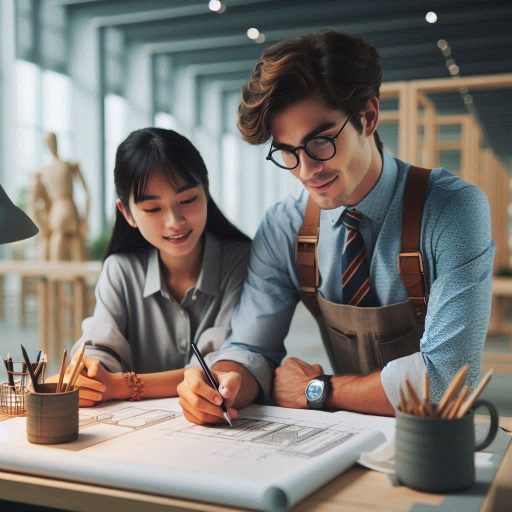Introduction
Exhibition design focuses on creating immersive environments that showcase products, services, and ideas effectively.
This field combines art, architecture, and marketing to engage visitors and enhance their overall experience.
Effective exhibition design captivates attention and encourages interaction, fostering meaningful connections between brands and their audiences.
A well-designed exhibit invites visitors to explore, learn, and engage, transforming passive observation into active participation.
Staying updated with emerging trends in exhibition design is essential for success in today‘s competitive landscape.
These trends shape how visitors interact with exhibits and influence their perceptions of brands.
Innovative designs can attract more attendees, improve brand visibility, and create lasting impressions.
In a rapidly evolving industry, embracing the latest trends helps exhibitors stand out.
Utilizing cutting-edge technologies and contemporary design concepts allows businesses to create memorable experiences that resonate with visitors.
Ultimately, understanding these trends ensures that exhibition designers remain relevant, impactful, and equipped to meet the ever-changing demands of the market.
Staying informed about industry innovations is key to driving success and enhancing engagement.
Incorporation of Technology
How technologies such as augmented reality and virtual reality are being used to enhance visitor experiences
Emerging technologies significantly enhance visitor experiences in exhibition design.
Augmented reality (AR) and virtual reality (VR) are at the forefront of this transformation.
These technologies immerse visitors in interactive environments, making exhibitions more engaging and educational.
Provide examples of museums and galleries
Museums and galleries worldwide have adopted AR and VR to enrich their displays.
The British Museum in London showcases AR features that allow visitors to explore ancient artifacts in 3D.
With their smartphones, visitors can point at specific exhibits.
The app then overlays digital information, providing a deeper understanding of the items.
Visitors can virtually dive into ocean ecosystems, witnessing marine life up close.
This immersive experience enhances learning and leaves a lasting impression on attendees.
The Museum of Modern Art (MoMA) in New York City also embraces technology.
It features interactive installations where visitors create digital art through touchscreen displays.
These hands-on experiences foster creativity and encourage visitors to engage with modern art in new ways.
Another example is the Van Gogh Museum in Amsterdam, which utilizes AR to enhance its exhibitions.
Visitors can view animated versions of Van Gogh’s paintings, bringing his art to life.
This blend of art and technology captivates audiences, making the experience unforgettable.
Visitors can delve into detailed stories and background, enriching their understanding of the pieces.
As technology advances, exhibitions are becoming more adaptive to visitor preferences.
Some museums offer personalized AR experiences based on individual interests.
The integration of technology in exhibition design fosters a new level of interactivity.
This shift from passive observation to active engagement reshapes how people experience art and culture.
Future exhibitions may feature advanced AI-driven installations that respond to visitor interactions.
Such developments will create dynamic experiences, keeping audiences intrigued and returning for more.
Incorporating AR and VR in exhibition design transforms how we experience art and history.
Read: Character Design Trends: What‘s Hot in 2024?
Sustainability in Exhibition Design
Sustainability has become a key focus in exhibition design.
Designers increasingly prioritize eco-friendly materials and practices.
This trend reflects a broader commitment to environmental responsibility.
By integrating sustainable elements, exhibitions can appeal to conscious visitors.
Here‘s how sustainable design is reshaping the exhibition landscape.
Incorporating Sustainable Materials
Exhibition designers now favor sustainable materials over traditional options.
They often use:
- Recycled Materials: Items made from post-consumer waste reduce resource consumption.
- Biodegradable Materials: These materials decompose naturally, minimizing landfill impact.
- Locally Sourced Products: Using local resources lowers transportation emissions and supports local economies.
- Sustainable Fabrics: Organic cotton, hemp, and bamboo are popular choices for displays.
Using these materials not only helps the environment but also resonates with visitors.
Eco-conscious attendees appreciate the effort to reduce waste and carbon footprints.
Eco-Friendly Practices
In addition to materials, sustainable practices enhance exhibition design.
Designers adopt strategies such as.
- Energy Efficiency: LED lighting and energy-efficient displays minimize energy consumption.
- Modular Designs: These designs allow for easy reconfiguration and reuse, reducing waste from one-time use.
- Digital Solutions: Virtual displays reduce the need for printed materials and physical artifacts.
- Waste Management: Implementing recycling and composting programs during exhibitions promotes responsible waste disposal.
These practices demonstrate a commitment to sustainability.
They create an engaging experience for visitors while promoting environmental stewardship.
Attracting Environmentally-Conscious Visitors
Sustainable exhibition designs attract a growing demographic of eco-aware attendees.
Visitors are more likely to engage with institutions that prioritize sustainability.
These designs foster a positive image and build brand loyalty.
Institutions can enhance their reputation by showcasing a commitment to environmental responsibility.
By adopting sustainable practices, exhibitions can stand out.
Attendees often share their experiences with others, amplifying the impact.
A strong commitment to sustainability can drive higher attendance and engagement.
Promoting a Positive Image
Institutions that prioritize sustainability send a clear message.
They showcase their dedication to environmental issues.
This commitment fosters trust among visitors and stakeholders.
Exhibitions that highlight eco-friendly practices enhance the institution’s brand image.
They create a narrative of responsibility and innovation.
Sustainability is reshaping exhibition design.
By incorporating eco-friendly materials and practices, designers attract environmentally-conscious visitors.
Institutions benefit from a positive image and increased engagement.
As this trend continues, sustainability will remain a central theme in the future of exhibition design.
Embracing these changes can position institutions as leaders in both innovation and environmental responsibility.
Read: How to Price Your Ceramic Artwork
Immersive Environments in Exhibition Design
Immersive environments are transforming exhibition design.
These spaces captivate visitors and enhance their experiences.
They encourage participation and exploration through interactive elements.
The Rise of Immersive Environments
- Interactive Multimedia Displays: Exhibitors now use advanced technology to create dynamic displays.
These multimedia installations engage multiple senses. Visitors can touch, see, and hear, making each experience unique. - Sensory Experiences: Designers incorporate various sensory elements into exhibitions.
Smells, sounds, and tactile features enhance the overall environment.
These elements draw visitors deeper into the narrative. - Virtual and Augmented Reality: Virtual and augmented reality are increasingly popular.
These technologies create immersive simulations that transport visitors to new worlds.
They provide memorable experiences that traditional displays cannot match. - Spatial Storytelling: Designers craft spaces that tell stories.
Each area flows into the next, guiding visitors through a curated journey.
This spatial storytelling creates emotional connections with the content. - Customization and Personalization: Many exhibitions allow visitors to customize their experiences.
Interactive kiosks or mobile apps enable tailored interactions.
This personalization keeps visitors engaged and invested in the exhibition.
Impact of Immersive Environments
Creating immersive environments yields significant benefits.
They enhance visitor participation and encourage exploration.
Here are some key impacts:
- Memorable Experiences: Immersive environments create lasting memories.
Visitors are more likely to remember their experiences and share them with others. - Increased Engagement: Engaging spaces hold visitors’ attention longer.
They foster curiosity and invite exploration, leading to deeper learning. - Enhanced Brand Connection: Brands can build stronger connections with audiences.
Memorable experiences resonate emotionally, enhancing brand loyalty. - Encouragement of Social Interaction: Immersive environments often encourage group activities.
Visitors share experiences, fostering social connections and discussions. - Boosted Attendance: Unique and engaging exhibitions attract more visitors.
Immersive environments create buzz, increasing attendance and interest in future events.
Immersive environments are revolutionizing exhibition design.
They create interactive, engaging spaces that encourage visitor participation.
By incorporating sensory experiences and advanced technology, exhibitions become memorable journeys.
This shift not only enhances visitor satisfaction but also strengthens brand connections.
The future of exhibition design lies in these immersive experiences, ensuring a vibrant and engaging atmosphere for all.
Read: Top Skills Needed for a Successful Character Designer
Personalization and Customization
Exhibition designers are constantly striving to offer more personalized experiences for visitors by incorporating customizable elements.
This trend has gained popularity in the recent years as it enhances visitor engagement and makes the exhibition more memorable.
Benefits of Personalization and Customization in Exhibition Design
- Enhanced Visitor Engagement: By allowing visitors to personalize their experience, designers can create a more interactive and immersive environment.
- Increased Visitor Satisfaction: When visitors feel that the exhibition is tailored to their preferences, it leads to higher satisfaction levels.
- Improved Brand Perception: Personalized experiences help in creating a positive perception of the brand among visitors.
- Higher Return Visits: Visitors are more likely to return to an exhibition that offers personalized experiences as they feel a connection to the content.
Use of Data Analytics and Visitor Feedback
One of the key strategies employed by exhibition designers to achieve personalization is the use of data analytics and visitor feedback.
By collecting and analyzing data on visitor behavior, interests, and preferences, designers can tailor the exhibition experience to individual visitors.
Data Collection
- Visitor Surveys: Designers often collect feedback through surveys to understand visitor preferences and interests.
- Tracking Technologies: Data analytics tools and tracking technologies help in monitoring visitor movement and interactions within the exhibition space.
- Social Media Listening: Monitoring social media conversations and engagements provides valuable insights into visitor sentiments and preferences.
Visitor Segmentation
Based on the data collected, designers can segment visitors into different groups with similar preferences.
This segmentation allows for a more targeted approach to personalization, tailoring the exhibition content and experience to specific visitor segments.
Transform Your Career Today
Unlock a personalized career strategy that drives real results. Get tailored advice and a roadmap designed just for you.
Start NowCustomizable Elements
Designers are incorporating customizable elements within exhibitions to allow visitors to personalize their experience.
Some common customizable elements include interactive touchscreens, personalized recommendations, and self-guided tours based on visitor interests.
Personalized Content Delivery
By leveraging data analytics, designers can create personalized content delivery systems that cater to individual preferences.
This could include customized audio guides, augmented reality experiences, or personalized storytelling based on visitor interests.
Challenges in Personalization and Customization
- Privacy Concerns: Collecting visitor data raises privacy concerns, and designers must ensure compliance with data protection regulations.
- Technical Limitations:Implementing personalized experiences often requires sophisticated technology and resources.
This requirement can pose challenges for some exhibitors. - Cost Considerations: Personalization and customization can be costly, and exhibitors must weigh the benefits against the expenses involved.
- Visitor Resistance: Some visitors hesitate to share personal information.
This reluctance impacts the effectiveness of personalization strategies.
Engaging with personalized experiences becomes challenging.
Personalization and customization play key roles in modern exhibition design.
Designers create engaging and meaningful experiences for visitors.
Designers leverage data analytics and visitor feedback to tailor exhibitions.
They customize elements to match individual preferences and interests.
This approach enhances visitor satisfaction and creates lasting impressions.
Read: Career Paths in Ceramic Art and Design

Collaboration with Artists and Designers
The trend of collaborating with artists and designers
Emerging trends in exhibition design increasingly highlight collaboration with artists and designers.
This trend transforms traditional exhibitions into immersive experiences.
By integrating creative talents, organizers can present unique perspectives that engage audiences more deeply.
Collaborating with artists adds an artistic flair to exhibitions.
Artists bring fresh ideas that challenge conventional designs.
Their innovative approaches often lead to unexpected visual narratives.
This creativity can elevate an exhibition from ordinary to extraordinary.
The benefits of working with external talent to create innovative
Working with external talent provides numerous benefits.
First, artists and designers have specialized skills that enhance visual storytelling.
They can craft compelling environments that resonate with visitors.
Their expertise ensures that each element serves a purpose, creating a cohesive experience.
Second, collaboration fosters innovation.
When artists and designers work together, they combine different viewpoints.
This synergy can lead to groundbreaking concepts that redefine exhibition spaces.
Traditional boundaries blur, allowing for experimentation and exploration.
Such innovation captures the attention of diverse audiences.
Third, partnerships with external talent can generate buzz.
Unique and striking displays attract media attention and public interest.
Exhibitions that showcase the work of well-known artists or designers often draw larger crowds.
This increased visibility can lead to greater attendance and engagement.
Moreover, collaborating with artists can enhance branding.
Organizations can align their values with the artistic vision of collaborators.
This connection can strengthen their identity and resonate with target audiences.
By showcasing artists‘ work, organizations communicate a commitment to creativity and culture.
Additionally, collaboration can create opportunities for community engagement.
Inviting local artists to participate fosters a sense of ownership within the community.
It encourages residents to engage with the exhibition and feel pride in their local talent.
This connection can boost attendance and support for future events.
Collaboration with artists and designers is a significant trend in exhibition design.
It enhances creativity, fosters innovation, and creates visually stunning displays.
Organizations benefit from increased visibility, community engagement, and brand alignment.
By embracing this trend, exhibitions can become dynamic experiences that resonate with audiences.
Through these collaborations, the art of exhibition design continues to evolve, inspiring both visitors and creators alike.
Learn More: The Role of a Creative Director in Advertising
Multi-Sensory Experiences
Creating a memorable exhibition requires more than just visuals.
Multi-sensory experiences engage visitors on deeper emotional levels.
By incorporating touch, smell, and sound, designers can create immersive environments that leave lasting impressions.
The Importance of Engaging Multiple Senses
- Enhanced Engagement: Engaging multiple senses keeps visitors interested and attentive.
When visitors experience various stimuli, they become more involved with the content. - Emotional Connections: Different senses evoke different emotions.
By appealing to touch, smell, and sound, exhibitions can foster stronger emotional responses. - Memorable Experiences: Visitors remember experiences that engage multiple senses.
A touchable exhibit, an evocative scent, or immersive soundscapes can make events unforgettable. - Increased Retention: Multi-sensory experiences enhance information retention.
When visitors engage with content through various senses, they are more likely to remember it later.
Incorporating Touch, Smell, and Sound
Touch
Incorporating tactile elements encourages interaction.
Here are some ways to add touch to exhibitions:
- Interactive Displays: Provide hands-on activities that allow visitors to manipulate objects.
- Textured Surfaces: Use varied textures on walls or displays to invite tactile exploration.
- Wearable Technology: Integrate devices that visitors can wear to enhance their experience through feedback.
Smell
Scent plays a powerful role in evoking memories.
Here‘s how to utilize smell effectively:
- Ambient Scents: Use scents that relate to the exhibit‘s theme to create an atmosphere.
- Memory Triggers: Select specific scents that evoke emotional responses or memories tied to the content.
- Scent Stations: Set up areas where visitors can experience different scents related to the exhibition.
Sound
Sound enriches the visitor experience by adding depth.
Consider these strategies for sound integration:
- Ambient Soundscapes: Create background audio that complements the exhibition’s theme and atmosphere.
- Audio Guides: Offer narrated content to provide context and information about exhibits.
- Live Performances: Incorporate musicians or speakers to engage visitors in real-time.
Multi-sensory experiences transform exhibition design into impactful journeys.
By engaging touch, smell, and sound, designers create immersive environments that resonate with visitors.
This approach fosters emotional connections, enhances memory retention, and ultimately leads to a richer visitor experience.
As exhibitions evolve, incorporating multiple senses will become increasingly vital to captivate audiences and create lasting impressions.
Flexible and Modular Designs in Exhibition Design
The exhibition design landscape is rapidly evolving.
One key trend is the shift towards flexible and modular designs.
These innovative approaches enable exhibitors to adapt quickly to changing themes and audience needs.
Here‘s a closer look at this emerging trend.
Benefits of Flexible and Modular Designs
- Adaptability: Flexible designs allow for quick changes in layout.
Exhibitors can easily reconfigure spaces based on specific requirements.
This adaptability is crucial for events with multiple themes or varying audiences. - Space Utilization: Modular structures optimize the use of available space.
By using versatile layouts, exhibitors can create functional areas without overcrowding.
This efficiency enhances the overall experience for visitors. - Cost-Effectiveness: Investing in modular designs can reduce costs.
These designs eliminate the need for extensive renovations for each exhibition.
Instead, exhibitors can reuse existing components for future events. - Enhanced Visitor Experience: A well-planned, flexible layout improves visitor flow.
Attendees can navigate the space more easily, leading to a better overall experience.
Engaging designs encourage longer visits and deeper interaction with exhibits. - Sustainability: Modular designs promote sustainability.
Reusable components minimize waste and lower the environmental impact of exhibitions.
This eco-friendly approach resonates with today‘s environmentally conscious audiences.
Key Features of Flexible and Modular Designs
- Interchangeable Components: Use elements that can be easily switched out or combined.
This feature allows for creative setups that match various themes. - Lightweight Materials: Incorporate lightweight materials for easier transport and setup.
This approach simplifies the logistical challenges of exhibiting. - Modular Furniture: Utilize modular furniture that can be rearranged or repurposed.
This versatility enhances the functionality of the exhibition space. - Technology Integration: Include spaces for technology integration.
This allows for interactive displays and digital engagement with visitors.
In fact, flexible and modular designs are revolutionizing exhibition design.
These approaches offer numerous benefits, including adaptability, cost-effectiveness, and sustainability.
By embracing this trend, exhibitors can create engaging, dynamic spaces that meet the evolving needs of their audiences.
The future of exhibition design is undoubtedly flexible and modular, promising exciting possibilities for exhibitors and attendees alike.
Conclusion
In closing, some key emerging trends in exhibition design include immersive experiences, interactive elements, sustainability, and storytelling.
These trends are shaping the future of exhibition design by creating more engaging and memorable experiences for visitors.
As the industry continues to evolve, it is essential for designers and exhibitors to stay informed about new trends and innovative approaches.
By keeping abreast of the latest developments, they can continually enhance their exhibition designs and stay ahead of the competition.
Incorporating these emerging trends can help exhibitors create dynamic and impactful exhibits that capture the attention of attendees and leave a lasting impression.
By embracing new technologies and design principles, exhibition designers can create experiences that are both visually stunning and emotionally engaging.
Overall, staying open to change and being willing to adapt to new trends is crucial for success in the field of exhibition design.
By embracing innovation and creativity, designers can create experiences that resonate with their audience and elevate the overall exhibition experience.
[E-Books for Sale]
The Big Book of 500 High-Paying Jobs in America: Unlock Your Earning Potential
$19.99 • 500 High-Paying Jobs • 330 pages
Explore 500 high-paying jobs in America and learn how to boost your career, earn more, and achieve success!
See All 500 High-Paying Jobs of this E-Book
1001 Professions Without a Degree: High-Paying American Jobs You Can Start Now
$19.99 • 1001 Professions Without a Degree • 174 pages
Discover 1001 high-paying jobs without a degree! Unlock career tips, skills, and success strategies for just $19.99!




